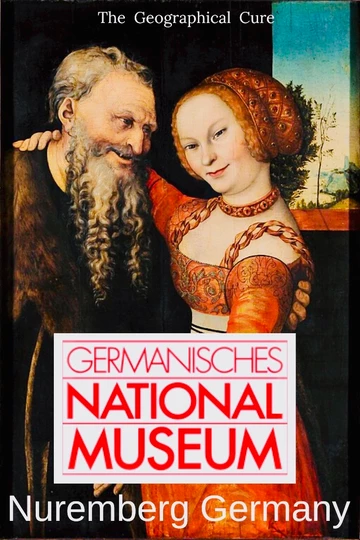Weather can be tricky in Germany in the fall. It’s irritatingly unpredictable.
I was in Germany during an unexpected fall “freeze,” when the weather flip flopped 30 degrees in a day or two. That’s a bit hard to bear now, isn’t it?
Having been frozen out, and drowned out, of Munich, I found myself in Nuremberg in a similar plight. I was growing weary of torrential rain.
After hours of battle, I decided to seek shelter in a museum. It wasn’t one that I planned on visiting. Yet it had some unexpected, and spooky, treasures.
The German National Museum, or Germanisches Nationalmuseum, is basically a treasure trove of German culture.
I’m a museum geek of the highest order. But I wasn’t sure what to make of a “German culture” museum. It seemed like more of an obscure artist museum.
But when you’re down and out, you’ll settle for anything that gets you dry. And I had already sought solace in Nuremberg’s lovely Albrecht Durer Museum and its myriad churches. So German cultural history was next, whether I wanted an esoteric education or not.
The German National Museum was founded in 1852 by Hans Freiherr von und zu Aufseß.
Setting lofty goals, he sought to assemble a “well-ordered general repertory of the entire source material for German history, literature and art.” The museum consists of several buildings. The core structure is a fetching 14th century cloister.
Greeting you outside the main entrance is the “Way of Human Rights” by sculptor Dani Karavan. It consists of 30 pillars, emblazoned with a different article from the Universal Declaration of Human Rights.
Unveiled in 1993, the installation is the city’s response to its Nazi past and designed to promote awareness of human rights.
Highlights of the German National Museum
First off, I’m going to warn you that the German National Museum is large, spread out over four floors. If you saw everything and read all the signage and listened to the audioguide, you’d be there until old age.
It’s comprehensive and it’s easy to be overwhelmed. If you’re a history lover, budget a half day.
Second, I was a little peeved at the museum’s bait and switch. Among other treasures, I’d expected a Rembrandt self portrait, an early Albrecht Durer portrait of his mother, and Cranach’s Martin Luther as a monk.
Wrong. All three of these seminal works were missing — on loan elsewhere. It’s seems odd for a museum to loan out all its stars …
I gnashed my teeth a bit. At least the world’s oldest globe, called Earth Apple, was on display.
So I contented myself with seeking out the quirkiest items that I could find. Most of these were in the medieval art section, a time where people were incredibly superstitious.
Some things considered normal then would be viewed as psychopathic now. But, truth be told, I liked the idiosyncratic bits.
There is a free brochure you get, but it’s in German and unhelpful. The easiest thing to do is wander around the museum. I visited the medieval, baroque, and renaissance sections.
Here are 15 of my favorite pieces at the museum, from a rich and diverse collection of antiquities.
In the end, I was defeated by the sheer size of the place. But more enchanted than I anticipated.
Given that the vast rooms were fairly empty — in the rain no less — I’d say this museum is a hidden gem in Nuremberg, especially for history and culture lovers.
Practical Guide & Tips for the German National Museum
Address: Kartäusergasse 1, 90402 Nürnberg
Hours: Tuesday to Sunday 10:00 am to 6:00 pm, Wednesday 10:00 am to 9:00 pm, closed Mondays
Entry fee: € 10
Pro tip: As with every museum in Germany, you have to check your backpack or large bag at a cost of 1 euro. Storage is in the lockers in the basement level next to the WCs.
I hope you’ve enjoyed my quick guide to the German National Museum. You may find these other Germany travel guides useful:
- Prettiest Towns in Germany
- 10 Day Bavaria Itinerary
- Landmarks in Germany
- Must See Sites on the Romantic Road
- 24 Hours in Munich
- 4 Day Itinerary for Munich
- 2 Day Itinerary for Nuremberg
- Guide To Neuschwanstein Castle
- Tips for Traveling in Germany
- Castles in Bavaria
If you somehow liked my quirky guide, pin it for later.

